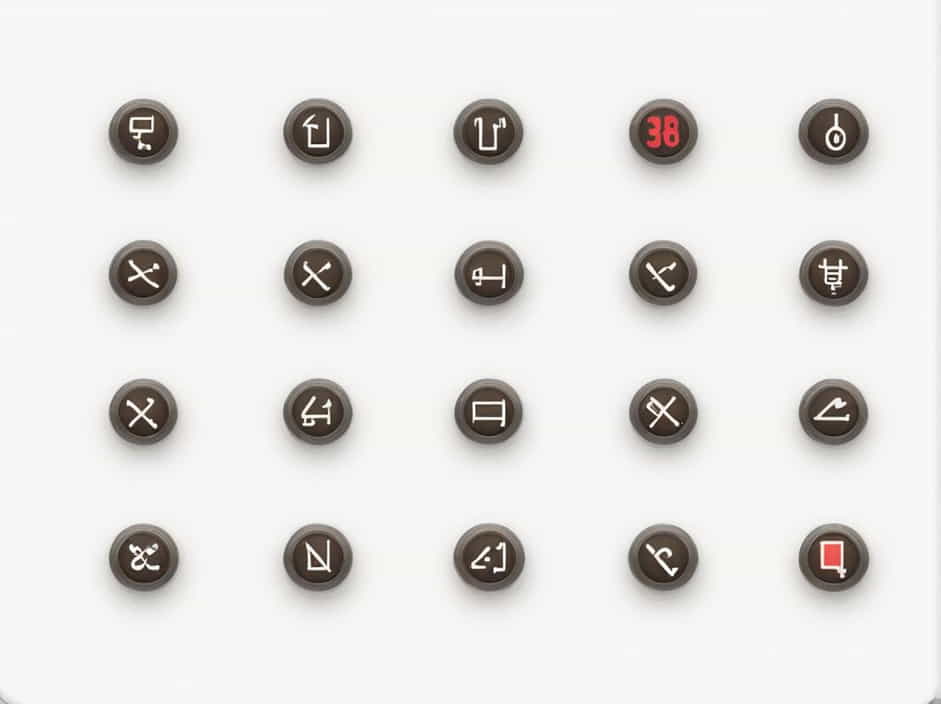Fractions are an essential part of mathematics, used in everyday life for measuring, cooking, budgeting, and more. Understanding how to multiply, divide, add, and subtract fractions is crucial for mastering basic arithmetic.
In this guide, we will break down fraction operations step by step, making it easy to follow and apply.
Understanding Fractions
A fraction consists of two parts:
- Numerator (top number) – Represents the number of parts taken.
- Denominator (bottom number) – Represents the total number of equal parts.
For example, in 3/4, the numerator is 3, and the denominator is 4, meaning three parts out of four.
Types of Fractions
- Proper Fractions – The numerator is smaller than the denominator (e.g., 2/5).
- Improper Fractions – The numerator is larger than or equal to the denominator (e.g., 7/4).
- Mixed Numbers – A combination of a whole number and a fraction (e.g., 3 1/2).
Now, let’s learn how to multiply, divide, add, and subtract fractions effectively.
Multiplying Fractions
Multiplying fractions is straightforward. Follow these steps:
Steps to Multiply Fractions
- Multiply the numerators.
- Multiply the denominators.
- Simplify the result if needed.
Example
Multiply 2/3 × 4/5
- Multiply numerators: 2 × 4 = 8
- Multiply denominators: 3 × 5 = 15
- Answer: 8/15 (already in simplest form)
Multiplying a Fraction by a Whole Number
Convert the whole number into a fraction by placing it over 1.
Example: Multiply 3 × 5/7
- Convert 3 to 3/1
- Multiply: (3 × 5) / (1 × 7) = 15/7
- Convert to a mixed number: 2 1/7
Dividing Fractions
Dividing fractions requires flipping (reciprocal) the second fraction and then multiplying.
Steps to Divide Fractions
- Flip the second fraction (reciprocal).
- Multiply the fractions.
- Simplify if necessary.
Example
Divide 3/4 ÷ 2/5
- Flip the second fraction: 2/5 → 5/2
- Multiply: (3 × 5) / (4 × 2) = 15/8
- Convert to a mixed number: 1 7/8
Dividing a Fraction by a Whole Number
Convert the whole number into a fraction and follow the same process.
Example: 5/6 ÷ 2
- Convert 2 to 2/1
- Flip it: 1/2
- Multiply: (5 × 1) / (6 × 2) = 5/12
Adding Fractions
Adding fractions requires finding a common denominator before adding the numerators.
Steps to Add Fractions
- Find the least common denominator (LCD).
- Adjust fractions to have the same denominator.
- Add the numerators.
- Simplify if needed.
Example (Same Denominator)
Add 3/8 + 2/8
- Denominators are already the same (8).
- Add numerators: 3 + 2 = 5
- Answer: 5/8
Example (Different Denominators)
Add 1/4 + 2/5
- Find LCD of 4 and 5, which is 20.
- Convert fractions: 1/4 = 5/20, 2/5 = 8/20
- Add: 5 + 8 = 13
- Answer: 13/20
Adding a Mixed Number
Convert mixed numbers to improper fractions before adding.
Example: 2 1/3 + 1 2/5
- Convert: 2 1/3 = 7/3, 1 2/5 = 7/5
- LCD of 3 and 5 is 15
- Convert: 7/3 = 35/15, 7/5 = 21/15
- Add: 35 + 21 = 56/15
- Convert to a mixed number: 3 11/15
Subtracting Fractions
Subtracting fractions follows the same process as addition, but instead of adding, subtract the numerators.
Steps to Subtract Fractions
- Find the least common denominator.
- Adjust the fractions.
- Subtract the numerators.
- Simplify the answer.
Example (Same Denominator)
Subtract 5/9 – 2/9
- Denominators are the same (9).
- Subtract numerators: 5 – 2 = 3
- Answer: 3/9, simplify to 1/3.
Example (Different Denominators)
Subtract 3/4 – 1/6
- Find LCD of 4 and 6, which is 12.
- Convert: 3/4 = 9/12, 1/6 = 2/12
- Subtract: 9 – 2 = 7
- Answer: 7/12
Subtracting Mixed Numbers
Convert mixed numbers to improper fractions before subtracting.
Example: 4 2/3 – 2 5/6
- Convert: 4 2/3 = 14/3, 2 5/6 = 17/6
- LCD is 6
- Convert: 14/3 = 28/6
- Subtract: 28/6 – 17/6 = 11/6
- Convert to 1 5/6
Tips for Working with Fractions
- Always simplify the final answer.
- Convert mixed numbers to improper fractions for easier calculations.
- Use cross-multiplication to compare fractions.
- Double-check denominators when adding or subtracting.
Understanding how to multiply, divide, add, and subtract fractions is essential for mastering math. By following these simple steps and practicing regularly, anyone can improve their fraction skills and apply them confidently in real-life situations.
